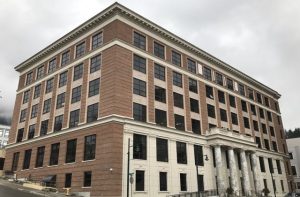AASB Legislative Priorities for 2018

The AASB Board of Directors has chosen the following six priority areas for its 2018 legislative advocacy focus. Supporting resolutions of the membership can be found in the document Where We Stand 2018.
Ensure Alaska’s future by investing in public education funding.
The authors and signatories of Alaska’s constitution recognized that to ensure prosperity and posterity, the state’s most important function is to provide a quality public education to every Alaska child. The single most significant threat to this constitutional mandate is the lack of a long-term, sustainable state fiscal plan. AASB members and staff will ceaselessly advocate for the necessity of investing in public education at both state and local levels in order to ensure our future.
For applicable AASB resolutions in Where We Stand see the section(s): Funding
Provide a culturally responsive education for every student, every day.
AASB supports and encourages the creation of culturally responsive learning environments that support high expectations and academic achievement for learners from all racial groups. AASB strongly encourages supporting sufficient resources for quality and relevant staff, including administrators. AASB currently collaborates with initiatives such as the Alaska Education Challenge, the newly structured University of Alaska College of Education, the First Alaskans Institute Education Council, the Educators Rising Standards, and the Inuit Circumpolar Conference on Education, in accomplishing equitable and relevant education in Alaska.
For applicable AASB resolutions in Where We Stand see the section(s): Personnel, Education Programs
Support Trauma-Informed Practices for Whole-Child and Whole-School approaches that build positive outcomes.
AASB recognizes that Alaska students experience high rates of childhood and community trauma. These experiences disproportionately impact education, health, safety and employment outcomes of Alaskans. AASB supports whole-school and trauma-informed approaches that have been proven to reverse negative outcomes and can build the resiliency of students, staff, and families. Trauma-Informed Practices include:
- School-wide approaches
- An understanding of Adverse Childhood Experiences
- Integration of learning experiences for the whole child (social, cognitive, emotional, and physical)
- Prepared adults
- Caring relationships
For applicable AASB resolutions in Where We Stand see the section(s): Child Advocacy, Personnel
Deliver equitable access to educational infrastructure for every student.
An investment must be made in infrastructure to ensure that every student, regardless of the physical location of their school, has equitable access to all educational programs. Broadband capacity in many areas of Alaska is deficient and unreliable, making it nearly impossible to deliver quality educational content. Career Technical Education (CTE) could provide skills needed for opportunities of employment for high school graduates. AASB recommends that the state, in partnership with districts and communities, conduct a needs assessment in all school districts and facilitate the creation of a plan to develop an educational infrastructure that can deliver equitable learning opportunities to every student.
For applicable AASB resolutions in Where We Stand see the section(s): Funding, Education Programs
Prepare students entering school to be ready to learn.
In the increasingly complex world we live in today, students cannot afford the luxury of wasting a single day from kindergarten through graduation. Many students enter kindergarten unprepared to begin school. As a result, valuable time must be expended to bring them to a state of learning readiness. Starting school without strong learning skills places some students in a position from which they may never be able to recover. Students who remain behind classmates throughout their public school experience are likely to become graduates who are continually disadvantaged throughout their lives. AASB encourages the Legislature to invest in Alaska’s future workforce by supporting and providing resources for a quality Pre-K experience for every child.
For applicable AASB resolutions in Where We Stand see the section(s): Funding, Child Advocacy, Education Programs
Increase recruitment and training of highly qualified teachers.
School districts across Alaska find it increasingly difficult to attract teachers to vacant positions. Even when teaching positions are filled, the turnover rate is staggering in both urban and rural districts. AASB encourages the University of Alaska system to increase and improve recruitment of teaching candidates for Alaska. AASB also recommends providing more experiential, “real life” teacher training in order to prepare new teachers for the Alaska experience. Additionally, the Legislature is encouraged to provide a robust teacher-mentoring program available to every new teacher to decrease the number of teachers leaving the profession and the state.
For applicable AASB resolutions in Where We Stand see the section(s): Funding, Personnel
